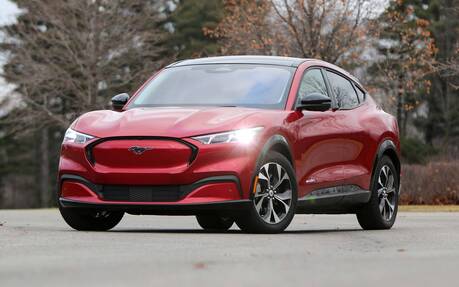More EV, PHEV Models Now Eligible to Federal Rebate
Starting Monday, April 25, the Canadian government’s Incentives for Zero-Emission Vehicles Program (iZEV), which grants rebates of up to $5,000, will be expanded to include the purchase of additional vehicle models popular with Canadians, such as SUVs, light-duty pickup trucks and minivans.
The announcement was made on Earth Day, fittingly, by the Minister of Transport, Omar Alghabra.
- Also: Ottawa Adds $73M to EV Rebate Program, More to Come in 2022
- Also: Canadian Government Takes Big New Steps in EV Plan
From now on, a car must have a base Manufacturer’s Suggested Retail Price (MSRP) that is less than $55,000 (previously $45,000). Higher-priced versions of these vehicles, up to a maximum MSRP of $65,000 (previously $55,000), are also eligible.
Furthermore, larger zero-emission vehicles—such as SUVs, minivans and pick-up trucks (we’re looking at you, Ford F-150 Lightning) must have a base MSRP under $60,000. More expensive versions, up to a maximum of $70,000, can also get the rebate.

By the way, it’s not immediately clear what the criteria are for these vehicles including size, weight, number of seats, etc.
Meanwhile, the government has changed the definition of eligible plug-in hybrids to be based on electric range rather than battery capacity. This means that PHEV models with an electric range of 50 km or more will be eligible for $5,000, and those under this threshold will continue to be eligible for $2,500.
Remember, the 2022 federal budget proposes to invest $1.7 billion to extend the iZEV program until March 2025, $547.5 million over four years to launch a new purchase incentive program for medium- and heavy-duty zero-emission vehicles (details will be announced over the summer), and $400 million in additional funding for EV charging stations across the country.
In order to accelerate the production and adoption of cleaner vehicles, the Canadian government will also put in place a sales mandate so at least 20 percent of new passenger vehicles sold in Canada will be zero-emission vehicles by 2026, 60 percent by 2030 and 100 percent by 2035.
